Introduction
Global capability centers innovation hubs are changing how enterprises grow and compete. Today, organizations face constant technological disruption and shifting customer expectations. As a result, they must innovate continuously to stay relevant. These centers have become key to achieving that goal.
No longer limited to outsourcing or cost reduction, GCCs now drive innovation, digital transformation, and global scalability. This blog explains how GCCs business transformation works, why innovation hubs future of business matters, and how talent and emerging technologies define the next era of enterprise growth.
What Changed: From Support to Strategy
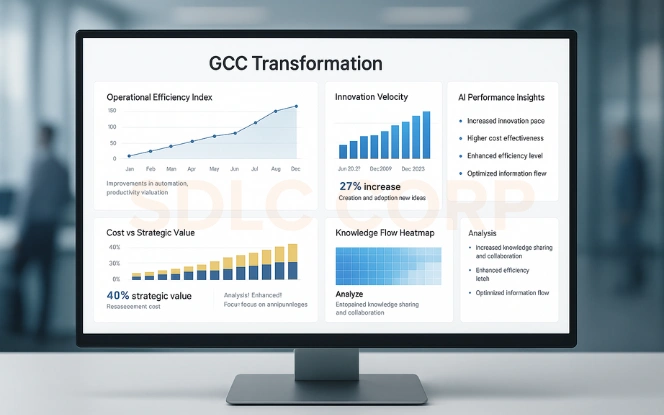
Global capability centers have moved far beyond their original purpose. Initially, they existed to manage low-cost, repetitive tasks like accounting, IT maintenance, and administrative functions. Over time, organizations realized that these centers could do much more. Today, they are the backbone of digital innovation and process excellence.
GCCs now design and deliver critical business solutions that influence company-wide strategy. They manage end-to-end transformation programs and deploy analytics that shape decision-making at the global level. Through innovation, they turn traditional support functions into engines of growth and insight.
Key Ways GCCs Add Strategic Value
- Innovation acceleration that enables faster experimentation and deployment of new ideas.
- Cross functional collaboration that breaks down silos between technology, business, and analytics.
- Knowledge retention that centralizes expertise and intellectual property.
- Operational resilience that offers consistent performance under changing market conditions.
These developments have redefined the purpose of GCCs as strategic growth partners rather than cost-saving units. Learn how leading enterprises use this model at Global Capability Centers to drive continuous transformation.
The Role Of Innovation Hubs In Business
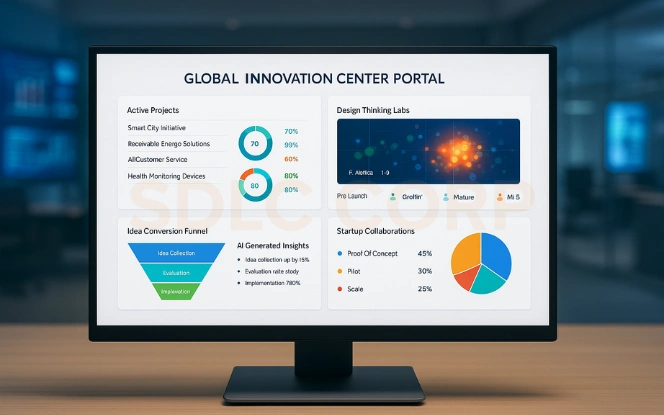
Innovation hubs within GCCs are now recognized as the lifeblood of organizational evolution. They create spaces where creativity meets execution, and where teams can transform ideas into actionable solutions. These hubs focus not just on technology but on culture, embedding agility, learning, and experimentation at the core of business operations.
How Innovation Hubs Enable Transformation
- Design thinking to develop human centric solutions that solve real user problems.
- Rapid prototyping to minimize time between idea and proof of concept.
- Collaborative ecosystems that involve startups, research institutions, and global teams.
- Knowledge transfer that encourages best practice sharing within the enterprise.
As a result, innovation hubs transform companies from reactive to proactive innovators. They anticipate trends, adapt products faster, and deliver sustainable advantages. These environments embody the innovation hubs future of business by blending structure and creativity seamlessly.
For a practical example, explore AI First Global Capability Centers UK to see how UK GCCs lead in AI led automation and innovation design.
How GCCs Enable Digital Transformation

The GCC role in digital transformation is more complex and strategic than ever. These centers unify technology, people, and processes across countries, enabling companies to operate as cohesive digital ecosystems. They make enterprise transformation measurable and scalable.
GCCs implement advanced tools that replace legacy systems with agile digital frameworks. They manage integration between cloud, data, and automation technologies to reduce inefficiencies. By doing so, GCCs act as both digital architects and guardians of transformation continuity.
Core Digital Transformation Responsibilities
- Cloud and infrastructure modernization through secure migrations and platform upgrades.
- Data intelligence with unified data lakes and analytics dashboards for real time insight.
- AI driven automation that simplifies workflows and improves decision making speed.
- Cybersecurity and compliance that safeguard growth across multiple jurisdictions.
Beyond execution, GCCs foster a culture of digital accountability, ensuring every innovation aligns with the company’s strategic goals. For a complete view of this model, explore Build a High Performance Global Capability Center UAE to understand how UAE GCCs lead digital first transformation strategies.
Talent And Emerging Technologies: The Twin Engines
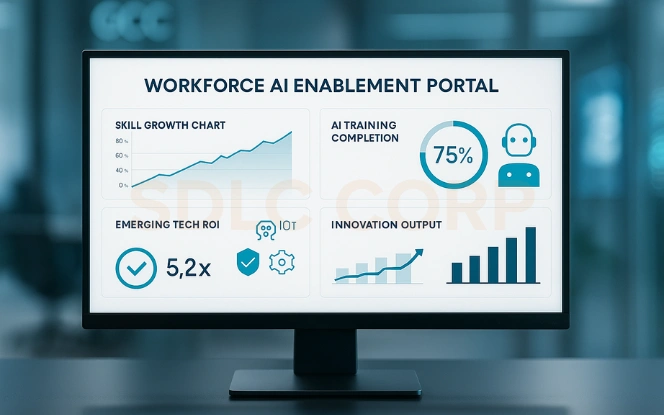
Talent and technology fuel the success of every GCC. The ability to balance both determines how efficiently an organization can innovate. Skilled teams drive AI, data science, and automation programs that reshape business outcomes.
GCCs create an environment where employees constantly learn and apply emerging technologies. They invest in leadership academies, rotational programs, and research initiatives to ensure long term skill growth. At the same time, they serve as testbeds for high impact technologies such as generative AI, quantum computing, and robotics.
How GCCs Build Innovation Capability
- Upskilling and leadership development that encourage a growth mindset across teams.
- Technology experimentation that allows controlled testing of frontier tech.
- Cross disciplinary collaboration that combines engineers, analysts, and designers.
- Diversity of thought through global workforce inclusion to spur creativity.
Together, these capabilities allow GCCs emerging technologies and talent to evolve in parallel. This combination of human intelligence and machine capability accelerates digital maturity.
Learn from successful examples at High Performance Global Capability Center US where innovation ecosystems are human led and data powered.
Measuring Impact: What To Track
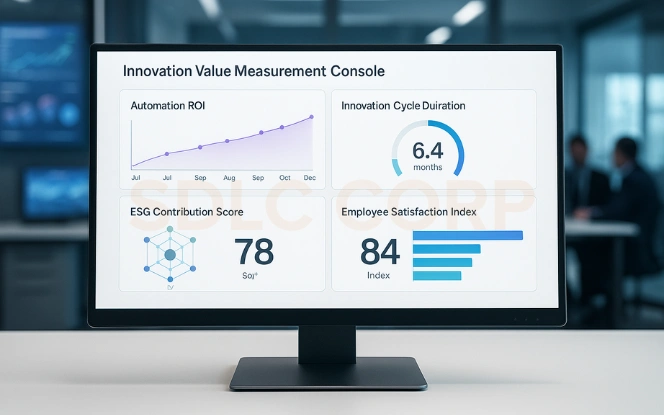
Measuring a GCC’s effectiveness requires looking beyond operational savings. Impact today is defined by value creation, innovation velocity, and business transformation outcomes.
Core Metrics For Evaluation
- Innovation pipeline growth that shows how many ideas become market ready products.
- Automation coverage that tracks the percentage of manual tasks replaced by AI.
- Employee development rate that measures training and upskilling progress.
- Sustainability contribution that reflects ESG and carbon efficiency integration.
These measures ensure transparency and accountability while enabling leadership to make data driven investments. Regular assessments allow GCCs to maintain alignment with business goals and sustain innovation momentum.
To explore operational frameworks and measurement models, visit What is a GCC and learn how well structured governance enables measurable growth.
Case Examples And Regional Moves

GCCs operate as regional innovation anchors across the world. Their growth in India, the UAE, the UK, and the US demonstrates how local strengths can fuel global transformation.
Regional Deep Dive
- India excels in advanced analytics, software engineering, and AI deployment that scale globally.
- The UAE focuses on sustainable tech ecosystems and innovation governance with rapid adoption.
- The UK leads in AI first operations, data design, and enterprise intelligence for global firms.
- The US drives research led digital frameworks and technology leadership with mature governance.
Each region’s GCCs contribute to a global innovation network that promotes collaboration and continuous learning. Together, they make enterprises faster, smarter, and more adaptive.
For insights into establishing GCCs in these regions, refer to How Much Does It Cost to Set Up a Global Capability Center for financial structure and scalability analysis.
Challenges And Risks
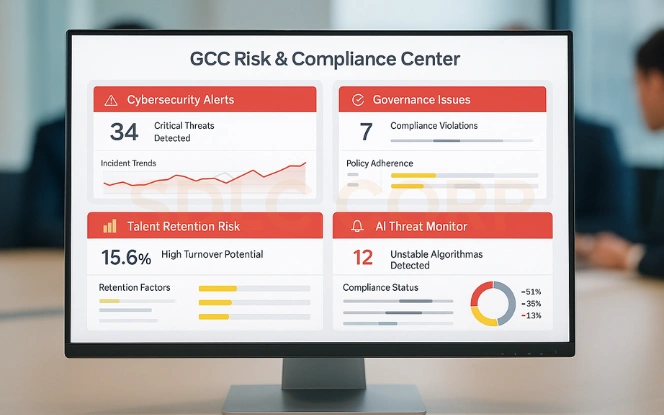
Despite success, GCCs face numerous challenges when scaling operations globally. The fast-paced nature of technology adoption often leads to coordination issues between headquarters and regional teams. Talent shortages in AI, cybersecurity, and cloud architecture also pose barriers to innovation.
Common Risks
- Talent Retention: Global competition for digital experts increases churn.
- Governance Gaps: Policy inconsistency causes delays in decision-making.
- Security Threats: Growing risks from AI-generated cyberattacks and data leaks.
- Cultural Integration: Aligning international teams under one innovation vision.
How GCCs Overcome Challenges
- Build comprehensive workforce programs focused on skill continuity and career growth.
- Adopt zero-trust security models and regular compliance audits to protect global systems.
- Encourage cross-border collaboration through shared digital platforms.
- Deploy AI-driven risk monitoring systems to detect issues early.
- Establish ethics boards and innovation councils to maintain governance integrity.
These strategies enable GCCs to mitigate risk while maintaining agility. As they expand, mature GCCs also invest in scenario planning and simulation-based governance models to predict disruption before it occurs. For operational excellence and risk mitigation best practices, explore Global Capability Centers for detailed frameworks.
Steps To Build A Strategic Innovation Hub
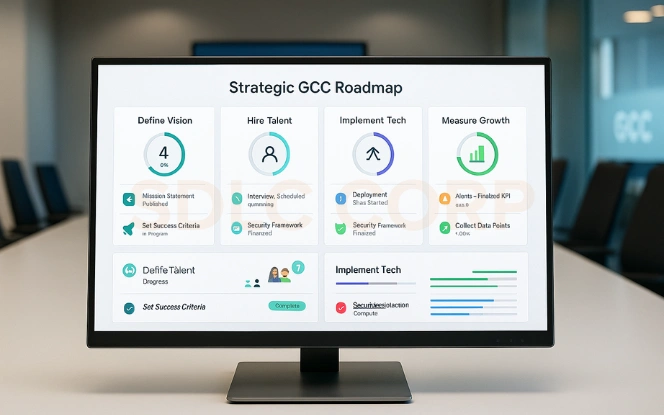
Building a world-class GCC requires both vision and precision. The process involves aligning business strategy with technological infrastructure and human capability. Successful GCCs treat the setup process not as an IT project but as a multi-year transformation initiative.
Phases Of Building A GCC
- Strategy Definition: Identify core objectives like cost optimization, innovation leadership, or data-driven operations.
- Operating Model Setup: Define global governance, collaboration tools, and performance measurement systems.
- Talent Development: Establish internal academies and partnerships with universities for continuous skill upgrades.
- Technology Implementation: Deploy cloud-native infrastructure, automated workflows, and integrated data models.
- Performance Evaluation: Set KPIs around innovation velocity, talent engagement, and cost efficiency.
To ensure sustained success, mature GCCs also integrate innovation accelerators, internal venture labs, and hackathon programs that foster creative thinking. They adopt AI-based project tracking systems that assess ROI for every initiative. Furthermore, cultural onboarding sessions for new hires enhance alignment with corporate goals. For implementation examples, explore Build a High Performance Global Capability Center UAE, which demonstrates scalable GCC models.
How Business Models Shift
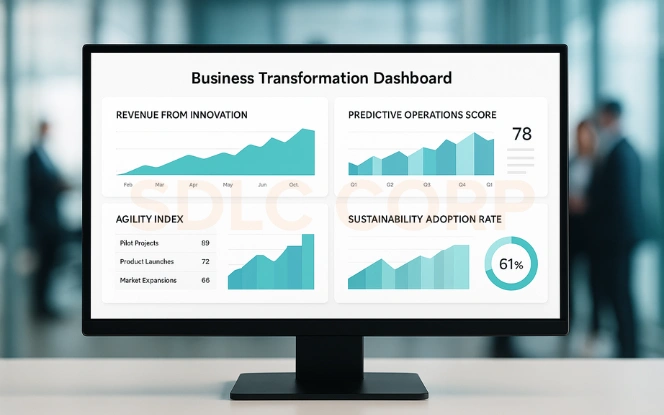
The evolution of GCCs has redefined how businesses create and deliver value. Traditional models that relied on siloed, top-down management are now giving way to dynamic, connected ecosystems powered by GCC-led innovation. This shift is not only structural but also strategic, affecting how decisions, data, and customer engagement are managed.
Key Business Model Shifts
- From Cost to Value Creation: GCCs contribute directly to innovation-led revenue streams.
- From Linear to Networked: Collaboration across business units fosters agile responsiveness.
- From Static to Adaptive: Continuous innovation ensures rapid market adaptability.
- From Isolated to Integrated: GCCs now shape sustainability and ESG-led operations.
Moreover, GCCs promote data democratization, where information is shared transparently across departments. This culture of openness increases accountability and speeds up transformation initiatives. Many GCCs are now developing modular operating models that allow plug-and-play scalability across multiple industries. They also partner with regional innovation ecosystems, ensuring their impact is not limited to cost efficiency but extends to ecosystem growth.
To see AI-led frameworks reshaping enterprises, visit AI First Global Capability Centers UK to understand how intelligent ecosystems enable real-time innovation.
Sector Specific Impact
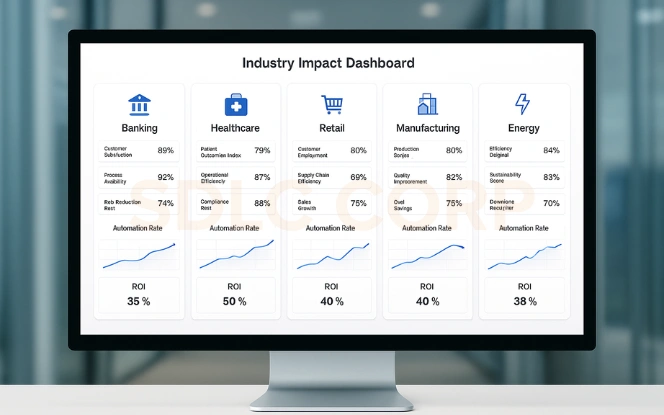
GCCs play transformative roles across diverse industries, driving operational efficiency, innovation, and sustainable growth. Each sector tailors its GCC strategy to match its market priorities, technology demands, and compliance obligations.
Industry Impact Overview
- Banking and Finance: GCCs implement AI-led fraud analytics, automated compliance, and personalized financial services. They also manage digital payment infrastructure and blockchain-backed security models.
- Healthcare: These hubs support telemedicine expansion, drug research analytics, and health data interoperability to ensure seamless care delivery.
- Retail: GCCs enable demand forecasting, omnichannel marketing, and AI-driven personalization to enhance customer engagement.
- Manufacturing: Smart factories benefit from predictive maintenance, IoT monitoring, and robotic process automation for real-time efficiency.
- Energy and Utilities: They deploy renewable energy forecasting models, grid optimization, and carbon tracking systems.
Beyond operational transformation, GCCs foster innovation governance by creating specialized R&D labs for sector-based experimentation. They encourage cross-domain learning where insights from one industry, such as retail AI analytics, are applied to others like healthcare diagnostics. This cross-pollination effect magnifies innovation potential globally.
To explore practical examples of sector excellence, review High Performance Global Capability Center US where industry leaders achieve measurable results through digital synergy.
Conclusion
In summary, global capability centers innovation hubs are shaping how businesses evolve. They lead transformation by combining technology, talent, and operating model change. When firms prioritize the GCC role in digital transformation, support innovation centers for enterprises, and invest in GCCs emerging technologies and talent, they gain a long-term competitive edge.
The rise of GCCs signifies a structural shift in how global companies approach growth. They now serve as co-creators of enterprise strategy, driving innovation at every level. Their integration with AI, cloud, and automation ensures that future enterprises will operate as intelligent, adaptive ecosystems.
By investing in governance, capability development, and responsible innovation, businesses can future-proof operations while achieving measurable efficiency. GCCs are not merely innovation enablers, they are now the foundation of digital competitiveness.
To explore how to establish or scale your own innovation hub, Contact us SDLC Corp.
FAQs
What Are Global Capability Centers And Why Are They Important For Business Growth?
Global capability centers are innovation-driven entities that help organizations improve efficiency, scale operations, and introduce new technologies. They play a vital role in driving global expansion and business transformation.
How Do Innovation Hubs Influence The Future Of Business?
Innovation hubs future of business lies in their ability to connect strategy with technology. They accelerate innovation, enhance digital transformation, and strengthen competitiveness by fostering collaboration and creativity.
What Is The Role Of GCCs In Digital Transformation?
The GCC role in digital transformation involves implementing automation, AI, and data analytics to streamline workflows. These centers modernize IT infrastructure and build scalable, tech-enabled operations.
How Do GCCs Drive Business Transformation Across Industries?
GCCs business transformation extends to sectors like finance, healthcare, and manufacturing. They enable smart operations, reduce costs, and ensure data-driven decision-making through emerging technologies and specialized expertise.
What Skills And Technologies Are Essential For GCC Success?
Success in GCCs emerging technologies and talent depends on expertise in AI, data science, cybersecurity, and cloud computing. Continuous learning, innovation culture, and leadership development are also crucial for sustainable growth.






